

Added 5 May 2007
Thursday, 15 March 2007, Estero San Jorge, La Poza Grande, Baja California Sur, Mexico
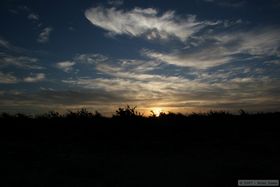
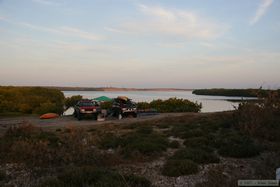
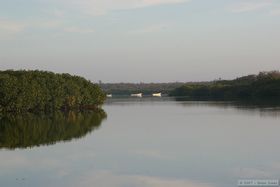 The Pacific side of Baja is noticeably colder than the Cortez side, but the morning was still pretty nice. We all puttered around camp a bit and eventually got around to breakfast so we could start the day's activities.
The Pacific side of Baja is noticeably colder than the Cortez side, but the morning was still pretty nice. We all puttered around camp a bit and eventually got around to breakfast so we could start the day's activities.
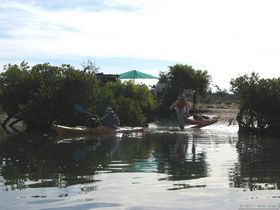 We got a fairly early start on the water in the morning. Again, there didn't seem to be much bird life in the area, but I did spot a yellow-crowned night heron right away and got some good shots of it. It was a very quiet morning in which we did a lot of drifting around without many words spoken between us. There were some fishermen out in their pangas making some noise though. We tried to stay out of their way while we watched the birds, including a flock of marbled godwits and Willets that were near their fishing spot. On the opposite side of the mangrove island, we saw a fair number of snowy egrets. We ended up seeing several species of herons and egrets that I had never seen before, so it was a fruitful morning. Eventually we came full circle around the mangrove island and reached camp in time for lunch.
We got a fairly early start on the water in the morning. Again, there didn't seem to be much bird life in the area, but I did spot a yellow-crowned night heron right away and got some good shots of it. It was a very quiet morning in which we did a lot of drifting around without many words spoken between us. There were some fishermen out in their pangas making some noise though. We tried to stay out of their way while we watched the birds, including a flock of marbled godwits and Willets that were near their fishing spot. On the opposite side of the mangrove island, we saw a fair number of snowy egrets. We ended up seeing several species of herons and egrets that I had never seen before, so it was a fruitful morning. Eventually we came full circle around the mangrove island and reached camp in time for lunch.
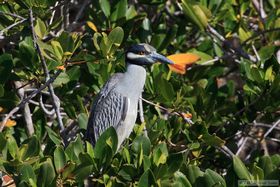
|
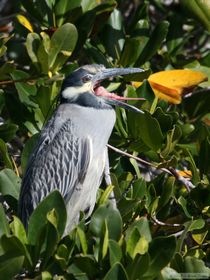
|
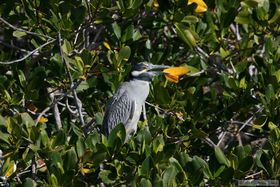
|
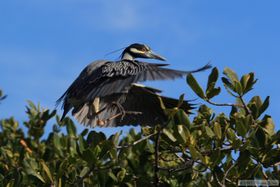
|
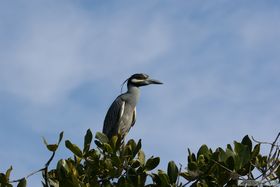
|

|
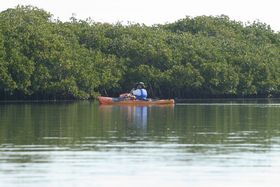
|
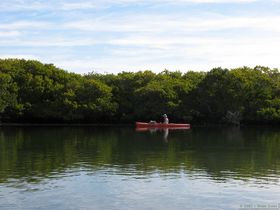
|
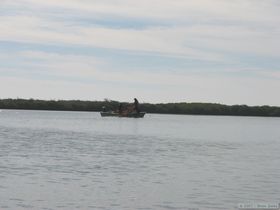
|

|
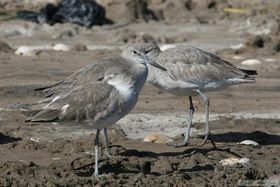
|

|
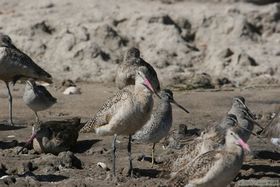
|

|
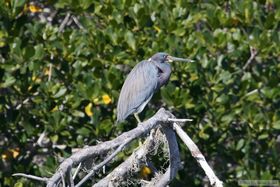
|
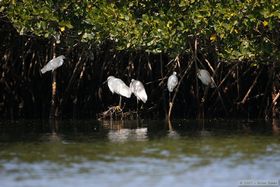
|
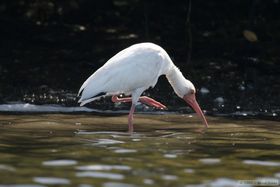
|
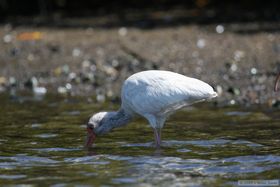
|
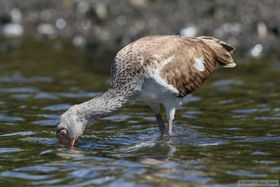
|
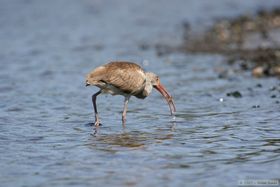
|
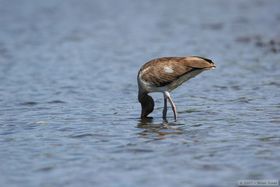
|

|
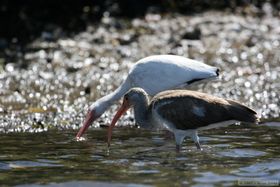
|
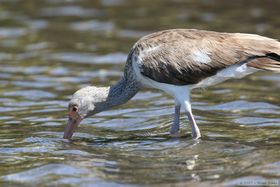
|
After lunch, we wanted to go kayak out to the boca (the mouth of the mangrove where it interfaces the ocean), but bocas can be very hazardous when the tide is going out because the currents can suck you out to sea, so we lounged around camp for a while waiting for the tide to start coming in. I wasn't able to find a tide chart for the mangroves before the trip, so used tide charts for a bays to the north and south of us for reference. When the charts said low tide had arrived we got our gear together and headed out.
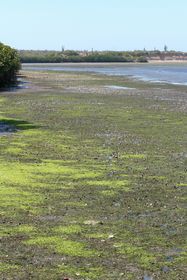
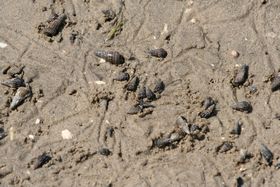 We had about 30 meters of muck to traverse to get to the water, but it didn't look too bad. My feet sunk about four inches into a slimy ooze with each footstep. At each step I had to work to prevent the mud from stealing my sandals. The problem was compounded by the many snails that got into my sandals, so that I was basically walking on snails the whole time. The technique I worked out was to slog up the side of the boat with my hands pressing down on the boat to try to reduce how much my feet sunk, slide the boat past me, and repeat. I could have gotten to the water a lot faster with different footwear, but I chose to wear my Crocs because they are super easy to clean.
We had about 30 meters of muck to traverse to get to the water, but it didn't look too bad. My feet sunk about four inches into a slimy ooze with each footstep. At each step I had to work to prevent the mud from stealing my sandals. The problem was compounded by the many snails that got into my sandals, so that I was basically walking on snails the whole time. The technique I worked out was to slog up the side of the boat with my hands pressing down on the boat to try to reduce how much my feet sunk, slide the boat past me, and repeat. I could have gotten to the water a lot faster with different footwear, but I chose to wear my Crocs because they are super easy to clean.
Finally, I reached the water, and I was so happy! I got in the boat, cleaned myself off a bit, and shoved off into the wild swamp . . . for about 10 feet. As it turned out, the water was only deep enough to float my boat in a few small areas. Instead of getting out of the boat to walk again, I decided to scoot myself forward using my hands, thinking that as I got further out, I would find water deep enough to float in. In retrospect, I should have just walked. We had to drag ourselves about 150 meters before we got to water that was deep enough to paddle in. Marisa had it easier though. Since she only weighs 80 pounds soaking wet, so she had a smaller draft than Chuck and I.
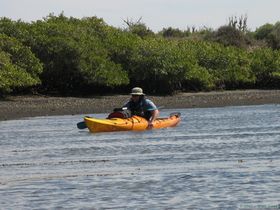
|
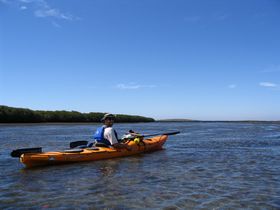
|
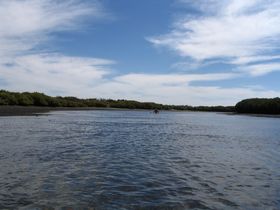
|
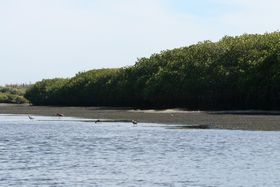 The most direct route to the boca was high and dry, so our plan was to kayak counter-clockwise around the island and out to the boca. Our new plan was quickly thwarted when we rounded the island and found that the other side was completely high and dry too. We turned around to head back to camp, and that's when we discovered that unbeknownst to us when we started our adventure, likely due to the fact that all of the water had to pass through the boca, the tidal cycle in the mangrove swamp was delayed. The water level was lower than when we had left. We had actually been crawling to the sea while the sea was crawling away from us.
The most direct route to the boca was high and dry, so our plan was to kayak counter-clockwise around the island and out to the boca. Our new plan was quickly thwarted when we rounded the island and found that the other side was completely high and dry too. We turned around to head back to camp, and that's when we discovered that unbeknownst to us when we started our adventure, likely due to the fact that all of the water had to pass through the boca, the tidal cycle in the mangrove swamp was delayed. The water level was lower than when we had left. We had actually been crawling to the sea while the sea was crawling away from us.
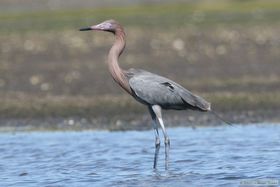
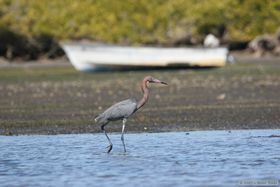 The wind kept pushing us into shore so Chuck and I anchored in to see what the tide was doing. After sitting for a while, we determined that the tide was finally starting to come back in, but we knew it would be quite a while before we could float back to camp, and even longer before we could go out to the boca. Still, Chuck and Marisa decided to start the trek home. I decided to make the most of the floatable area available and paddled to the very northern portion of the estuary to enjoy the birds and wait for deeper water.
The wind kept pushing us into shore so Chuck and I anchored in to see what the tide was doing. After sitting for a while, we determined that the tide was finally starting to come back in, but we knew it would be quite a while before we could float back to camp, and even longer before we could go out to the boca. Still, Chuck and Marisa decided to start the trek home. I decided to make the most of the floatable area available and paddled to the very northern portion of the estuary to enjoy the birds and wait for deeper water.
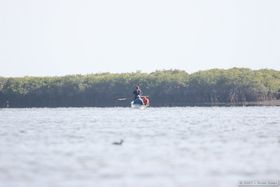 On my way north, I passed a boat containing three generations of scallop rakers, ranging in age from pre- or early teens to a gentleman I'd estimate to be in his sixties.
On my way north, I passed a boat containing three generations of scallop rakers, ranging in age from pre- or early teens to a gentleman I'd estimate to be in his sixties. 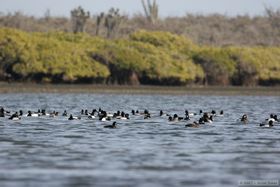 I didn't want to interfere with their work, so gave them as wide a berth as I could without running aground. We exchanged basic greetings as I paddled by. I cruised around the northern part of the estuary for a while, always keeping an eye on the water depth. The whole estuary was so flat and shallow at that point that there were large areas that were too shallow even for my kayak.
I didn't want to interfere with their work, so gave them as wide a berth as I could without running aground. We exchanged basic greetings as I paddled by. I cruised around the northern part of the estuary for a while, always keeping an eye on the water depth. The whole estuary was so flat and shallow at that point that there were large areas that were too shallow even for my kayak.
On my way back to camp, I was forced to pass much closer to the scallop rakers, and we ended up in a conversation of sorts, where they said something to me in Spanish that I barely understood and replied in broken Spanish that I'm sure they barely understood. Eventually I truly ran out of things to say and politely (I hope) bid them "Buenos tardes" and continued my journey home, stopping along the way to take advantage of the afternoon light and beautiful birds to get some nice photographs.
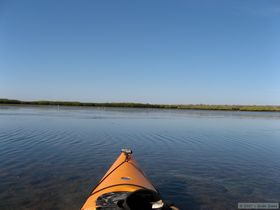
|
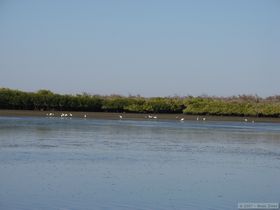
|
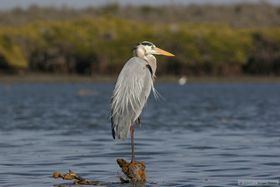
|
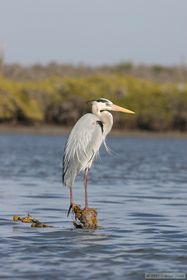
|
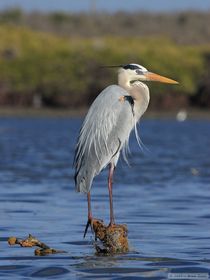
|

|
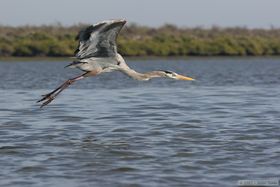
|
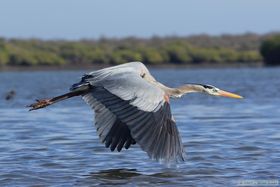
|
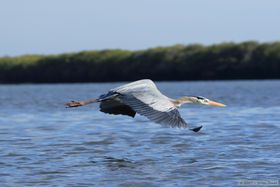
|

|
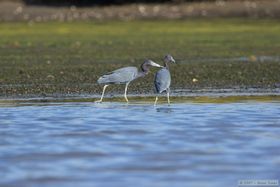
|
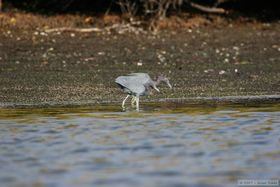
|
The water was still low by the time I got back to camp, but I was able to get almost all the way back. I beached down shore from camp because the ground was more solid there. Once I got my kayak to nearly solid ground, Chuck kindly helped me carry it back to camp. I then washed some of the muck off of my legs and cleaned the deck of my kayak up a little bit.
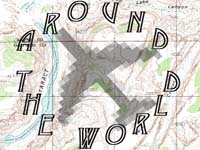 |
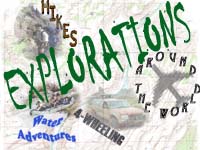 |